By David Beaumont.
The Australian Defence Force (ADF) went to East Timor in 1999 armed with luck and sustained by the outstanding initiative and resolve of its personnel. The logistics system, in contrast, was cobbled together from the remnants of twenty-five years of unceasing organisational change. It is difficult to avoid the feeling that the successful outcome of the International Forces East Timor (INTERFET) operation was achieved despite the state of logistics in the ADF, not because of it.
The ADF lacked the logistics resources, organic or those from civilian or international sources, to fulfil the requirements of a realistic approach to preparedness prior to the operation. Its joint command and control mechanisms were in their infancy, and the ADF’s strategic logistics and acquisition organisations were in the throes of major upheaval. The ADF had smart people, well-intentioned leaders both military and civilian, and was supported as best as possible from a Department that grappled with a complex and complicated mix of national circumstances in preceding years.
The ADF’s preparedness prior to this operation has been scrutinised through reports and analysis, at levels range from tactical to committees of Government. The lessons learned, or still waiting a resolution, have either morphed into what is thought to be daily business for Defence. We are fortunate in that an Official History of the INTERFET operation is being written. Similarly, the occasional articles such as Brigadier (retd) Mick Kehoe’s series at Logistics In War, remind us that there are pertinent personal stories from the past that remain eternally relevant to the soldier, sailor or airman. It’s always a good time to reflect upon messages from the past.
This article will describe the impact of strategic resourcing and logistics problems on operations. It will give a general sense of the traps the ADF and others fell into prior to leading this important coalition force. The problems of the ADF deployment in East Timor were not only because of the characteristic confusion caused by an unforeseen operation. Many preparedness problems had their origins in a long line of innocuous decisions made for the best of reasons. These had significant second-order consequences. A few will be outlined here.
Policy and concepts are important, but economics (and money) is everything
The hollowness and general inadequacy of the ADF’s logistics support was not a result of any strategy concept or policy including the ‘defence of Australia’ concept outlined in the policy document ‘Defence of Australia 1987’. Any operation defending the Australian north-west demanded was a difficult logistics enterprise, as highlighted by exercises such as the long-standing ‘Kangaroo’ series. A lack of logistics preparedness was a consequence of national economics, fifteen years of financial pressures on Defence, and a paradigm of Governmental outsourcing of functions considered enablers to combat forces.
From the moment that the strategic policy paper ‘Defence of Australia 1987’ (DOA) was published, the Australian defence budget began to tighten and senior decision makers in Defence had to compromise the strategic concept they were promoting. Four years after the document was aired, Australia was in the worst recession since the Great Depression and any chance that the funding ambitions to realise an ADF capability of delivering what DOA advocated were dashed.
Defence was compelled by Government to cut its costs. 1991, a year in which Recession was declared by Government, was a fateful one. It was the first year since the White Paper’s release that the ADF’s force structure was examined in detail. All planners in the review knew the commercialisation of Defence’s organic logistics and support agencies had to be accelerated to lower annual Defence costs. The report ‘Defence and the Community’ by former Secretary Alan Wrigley (Wrigley Report) advocated greater use of national industry for Defence needs, with a subsequent Inter-Departmental Committee (IDC) agreeing.
The 1991 Force Structure Review and the accompanying outsourcing program known as the ‘Commercial Support Program’, as well as the Howard Government’s 1996 Defence Efficiency Review and 1997 Defence Reform Program, substantially cut the logistics capabilities of the three Services. An assumption in all cases had been made that industry would – without any coherent prompts from Government or Defence – fill any short-notice operational needs. But there was another reason that the ADF’s logistics capabilities were in a parlous state by 1999.
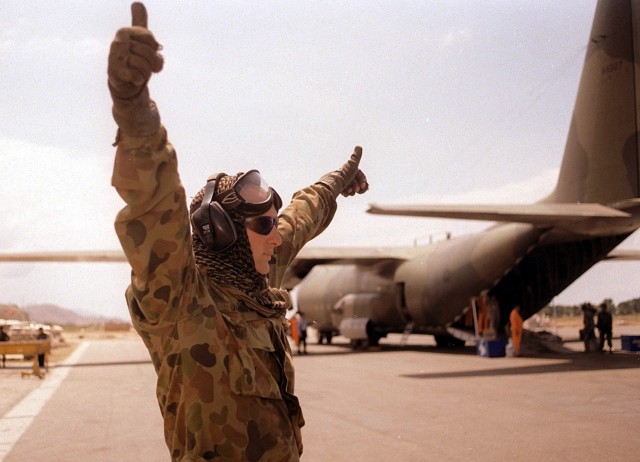
Beware paying for future capability with present-day preparedness
The cuts made to logistics capabilities had been a part of a long-term trend that had become unstoppable. Substantial components of the ADF’s organic logistics capability that existed well within the national support base operating messes and canteens, bases, supply depots, distribution services and numerous other functions had been systematically reviewed, assessed and outsourced. There was a belief, at the time, that though these services could be legitimately outsourced the depth of the logistics capability within the ADF would suffer as a consequence.
Defence leaders, however, had little choice other than to support these initiatives. Despite the intense funding pressures, ADF combat capabilities had to be modernised out of a period of ‘block obsolescence’. From ANZAC-class frigates to combat aircraft to Protected Mobility Vehicles (PMV); capabilities essential for the ADF’s combat capacity were being acquired and funds to these programs had to be protected. The size of the combat force had to be preserved as best as it could, though even these elements of the three Services couldn’t escape a portion of the personnel cuts.
Government and Defence broke one of John Collins principles of preparedness by failing to ensure present and future preparedness were in proper balance. The ‘consumption’ of the ADF’s enablers to fund long-term capability objectives would inhibit the ADF’s ability to respond to the unforeseen. But there were other areas of concern. One prominent issue related to the inadequate stockholdings of materiel and supplies for contingencies. After twenty years of trying, the ADF did not have an adequate supply of stores, equipment and vital consumables such as ammunition immediately prior to East Timor.
Paul Dibb, as a Deputy Secretary, could not entice the Services to spend their funds on adequate stockholdings in the early 1990’s to support the strategic concept he advocated prior to DOA87. Nor could successive Assistant Chief of Defence Force – Logistics (ACLOG), the then ‘strategic J4’, do the same afterwards despite policies and preparedness plans being created. Strikingly, these were exceptionally capable individuals; Major-General John Grey served as ACLOG during the 1991 force structure review and was promoted immediately afterwards to Chief of the General Staff.
The ADF, as part of Defence, ended up taking steps in the opposite direction by implementing a policy of ‘direct unit funding’. This approach to supply entailed unit commanders procure commonly available items from local civilian sources (i.e. hardware stores etc.). The concept sounded logical when conceived, and it reduced the need for units to hold stocks. It also reduced the need for costly deep storage. As forces consolidated in Darwin in 1999 these advantages were soon forgotten.
Units concentrated with inadequate stocks to sustain the operations planned for them in East Timor, and commercial supplies in Darwin were unavailable in the quantities required for a force that eventually exceeded 10000 personnel. Procurement of essentials was eventually transferred to Sydney, where the operational supply-chain eventually began. Thus, a decision made to reduce Defence costs had created a preparedness liability and required correction at the time the supply-chain should have been functioning effectively.
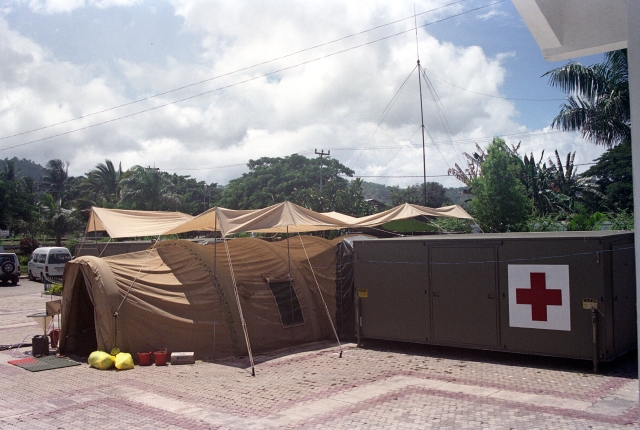
Effective logistics control requires organisational stability
The timing of peacekeeping operation into East Timor could not have been worse for Defence. As described earlier, the preceding fifteen years were organisationally tumultuous. As if the manipulations of the ADF’s logistics echelons wasn’t enough, the constant shifting of accountabilities and authorities with Defence magnified the uncertainty.
Since the Sanderson Review of 1989, the ADF had gained and lost a two-star ‘Assistant Chief of Defence Force Logistics’, replaced it with a two-star National Support Division to steward the ADF – national support base relationship, and created a two-star ‘Support Command Australia’ and ‘Joint Logistics Command’ out of Service Logistics Commands. With the size of the ADF decreasing, similar levels of turbulence were also seen within the Services and elsewhere in the Department of Defence. Operational-level command was less than a decade old, and the ADF lacked experience in planning major operations.
The ability of ADF commanders or logisticians to make high-quality decisions about logistics resources, or to coordinate support obtained from industry, international partners or elsewhere in the national support base, had been unintentionally damaged by the time of Operation Warden. Responsibilities for various levels of logistics had yet to be set by practice, command was diffuse, and control over logistics processes was conflicted. This manifested in range of issues during the mounting of the force, emblemised by the chaos witnessed in Darwin.
There was no appointed ‘strategic J4’ for the ADF with the ACLOG position disestablished, and Head National Support Division (HQ NSD) in HQ ADF was appointed as the CDF’s logistics advisor well under the operation was underway. Joint Logistics Command, merely two years old, lacked the proficiency and capacity to support the mounting of the force in Darwin. There was little choice but to rely upon available the single-Service logistics systems (predominantly Army’s Logistics Support Force) and employ ad-hoc arrangements to get by.
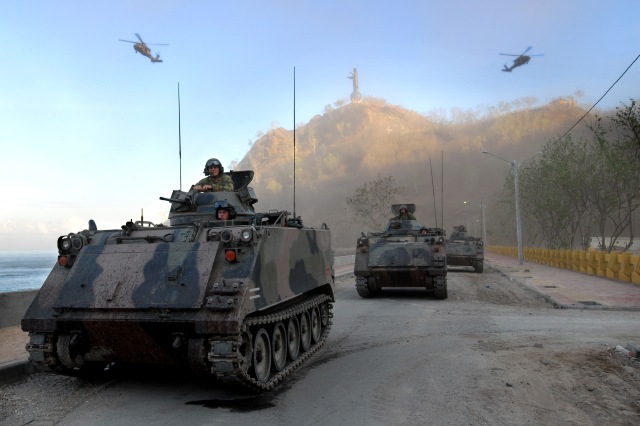
Force posture is critically important, but is irrelevant if it is only defined by the forward positioning of troops
Would these problems have been as severe had a greater portion of the force positioned in Northern Australia early? Perhaps, with some important caveats. Established military force posture is an outcome of answering ‘how much time does it take to get the most military ‘power’ to a given point in a given time?’. Forces are positioned in advance of military operations because it eliminates the time otherwise taken by transporting them.
Forward forces alone, however, are not enough. It should be self-evident that access to logistics support, ‘supply-chains’ and maintenance sites also ensure personnel and machines practically useful at the point of need. Industry and national infrastructure must be available, especially in the case of deploying a force. As established above, this was not the case in Darwin in 1999.
The relationship between industry and defence forces are typically focussed upon the acquisition and sustainment of materiel and specific services. This focus reflects, perhaps rightly, the nature of defence funding. However, it is also critical that concepts in which the national support base is ‘leveraged’ to support military operations are discussed.
In 1999, despite twenty years of intellectual investment in concepts for the defence of Australia, despite the establishment of NSD in HQ ADF to develop the plans and policies to marshal ‘national support’ for ADF operations, and despite military exercises, it concerned many at the time that Australia was ill-prepared for a sizable military force in its north let alone ready to project it much further than the shoreline. Risk was accepted from Government to the ADF that Australia would never need to enact policy or test its concepts.
Could defence industry made greater contributions during the East Timor crisis? They were involved at all levels, but as with the ADF, industry partners lacked the capability or capacity that was needed at short notice. Transportation services supported the deployment, telecommunications companies deployed, and a range of businesses offered opportunities to share the burden of military operations alongside the ADF’s logistics forces. The challenge was coordinating these inputs. At the time policy intent was not matched by ADF doctrine about ‘employing civilians in the theatre’ and the arrangements and capacities necessary to make the most of an otherwise health Defence-industry relationship wasn’t there.
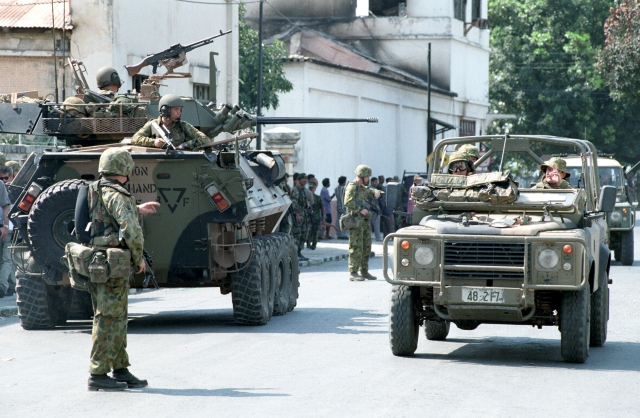
Conclusion
In considering the points this article makes it is important to remember just how unexpected the INTERFET deployment was, and that Defence worked tirelessly to make the operation the success it became. Similarly, it was a time of seemingly incredible difficulty for senior leaders in the ADF and elsewhere who had to make fundamental force structure and preparedness decisions, fully aware that no one could adequately advise them on the operational costs of their decisions.
This article is therefore not to criticise but to critique; to look to history to determine how best military leaders and civilian officials can best posture the military when the nature of future operations is unknown. It is an example which reminds them of the importance of every decision they make as the second-order consequences may have ramifications well beyond the considered strategic horizon.
The INTERFET deployment is a potent reminder of the intrinsic link between logistics and overall preparedness. Twenty years have passed since the operation and many of the problems have been addressed by the ADF and others across the national security community. A period of consistent operational commitments since INTERFET has created an experienced defence force that should be able to avoid a recurrence of the severe problems in preparedness experienced in 1999.
However, as operations are unique, we really can’t be too sure that the future ADF will avoid the problems which afflicted INTERFET. What is important that the ADF, and those that support it, now look for warning signs in preparedness that emerge from time to time. Risk acceptance is expected in defence planning, and it is impossible to prepare for every conceivable military circumstance.
The best option is to have a logistics process that can adapt quickly and effectively. For the ADF in 1999, this was not the case. Only time will tell if it is now.
The thoughts are those of the author alone.
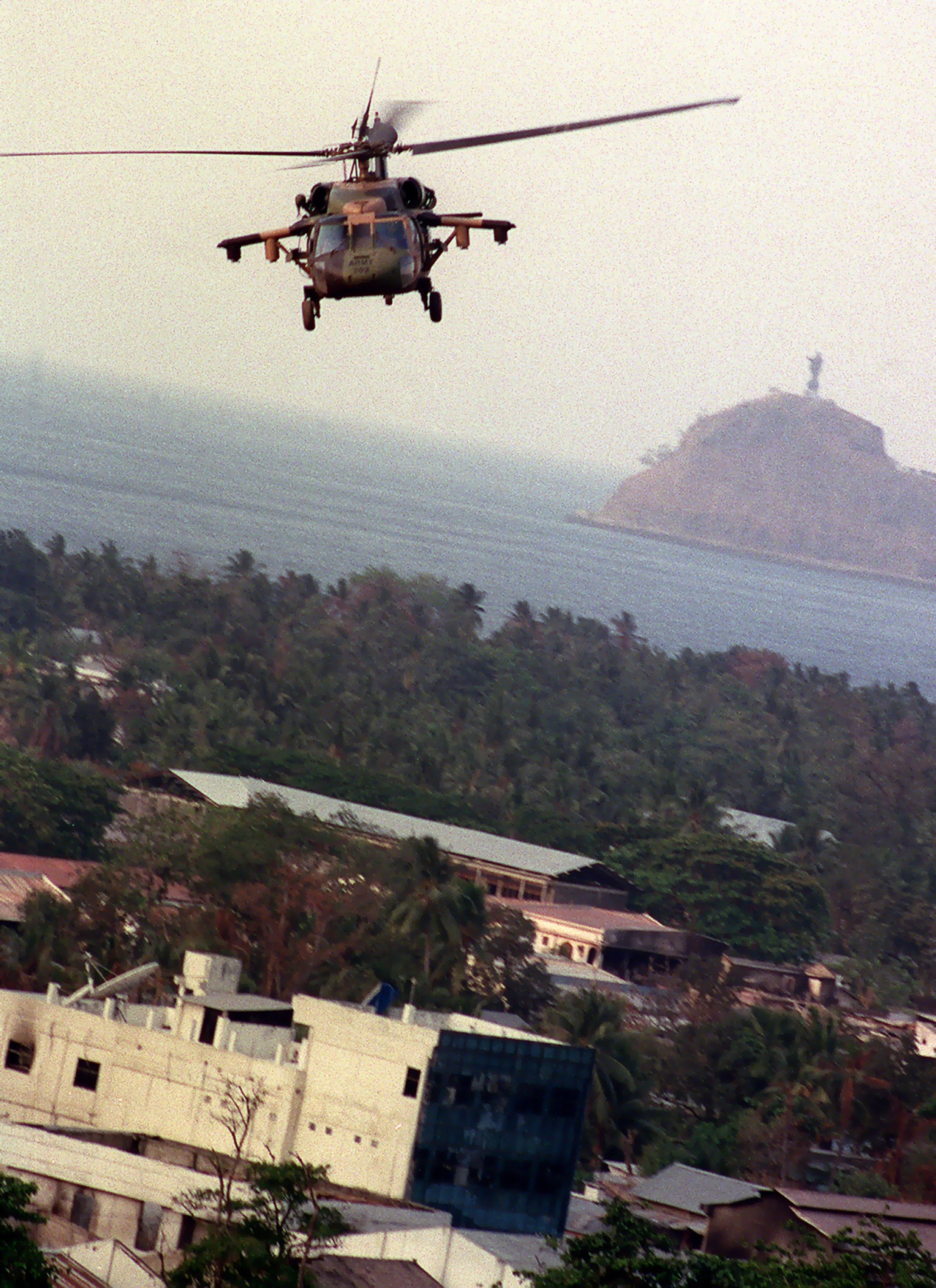
Has it really changed since then? I don’t believe it has due to the ongoing cut backs of Supply troops, constant reorganisation, poor resupply of stock, multiple supply chains for commodities and so on. This is on top of poor structures, lack of equipment and many other factors.
LikeLike
Great article David. I remember the Canadian contingent PAR included the comment ” Surprise is not a principle of logistics” .
LikeLike